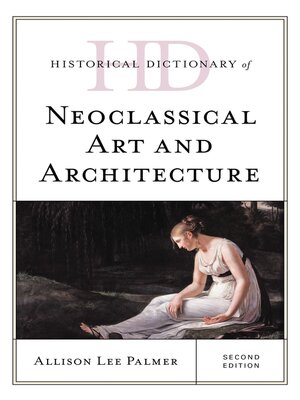Historical Dictionary of Neoclassical Art and Architecture
ebook ∣ Historical Dictionaries of Literature and the Arts
By Allison Lee Palmer

Sign up to save your library
With an OverDrive account, you can save your favorite libraries for at-a-glance information about availability. Find out more about OverDrive accounts.
Find this title in Libby, the library reading app by OverDrive.



Search for a digital library with this title
Title found at these libraries:
| Library Name | Distance |
|---|---|
| Loading... |
Neoclassicism refers to the revival of classical art and architecture beginning in Europe in the 1750s until around 1830, with late neoclassicism lingering through the 1870s. It is a highly complex movement that brought together seemingly disparate issues into a new and culturally rich era, one that was unified under a broad interest in classical antiquity. The movement was born in Italy and France and spread across Europe to Russia and the United States. It was motivated by a desire to use ideas from antiquity to help address modern social, economic, and political issues in Europe, and neoclassicism came to be viewed as a style and philosophy that offered a sense of purpose and dignity to art, following the new "enlightened" thinking.
This second edition of Historical Dictionary of Neoclassical Art and Architecture contains a chronology, an introduction, and an extensive bibliography. The dictionary section has over 300 cross-referenced entries cover late Baroque and Rococo tendencies found in the early 18th century, and span the century to include artists who moved from neoclassicism to early romanticism. This book is an excellent resource for students, researchers, and anyone wanting to know more about neoclassical art and architecture.
This second edition of Historical Dictionary of Neoclassical Art and Architecture contains a chronology, an introduction, and an extensive bibliography. The dictionary section has over 300 cross-referenced entries cover late Baroque and Rococo tendencies found in the early 18th century, and span the century to include artists who moved from neoclassicism to early romanticism. This book is an excellent resource for students, researchers, and anyone wanting to know more about neoclassical art and architecture.







